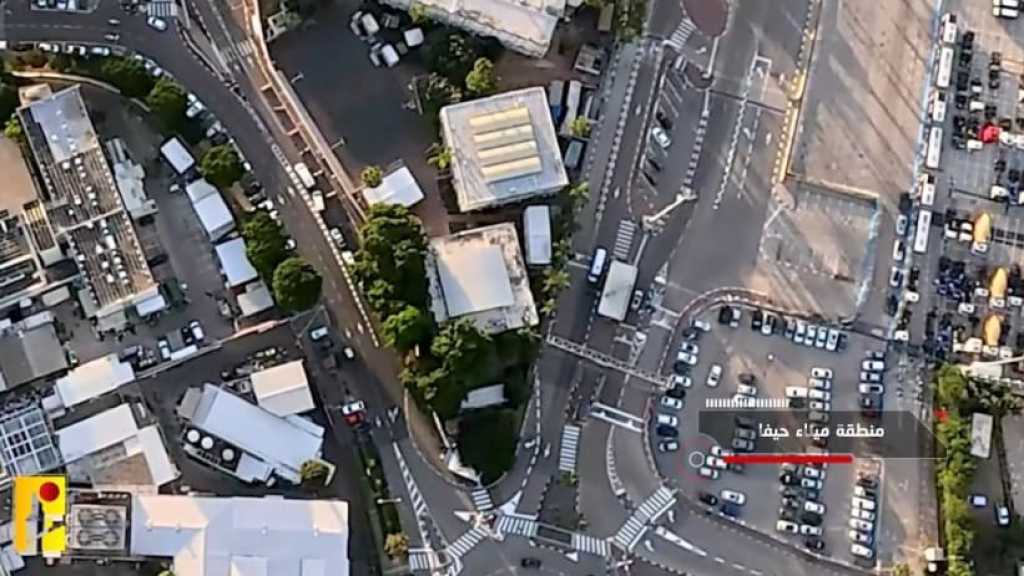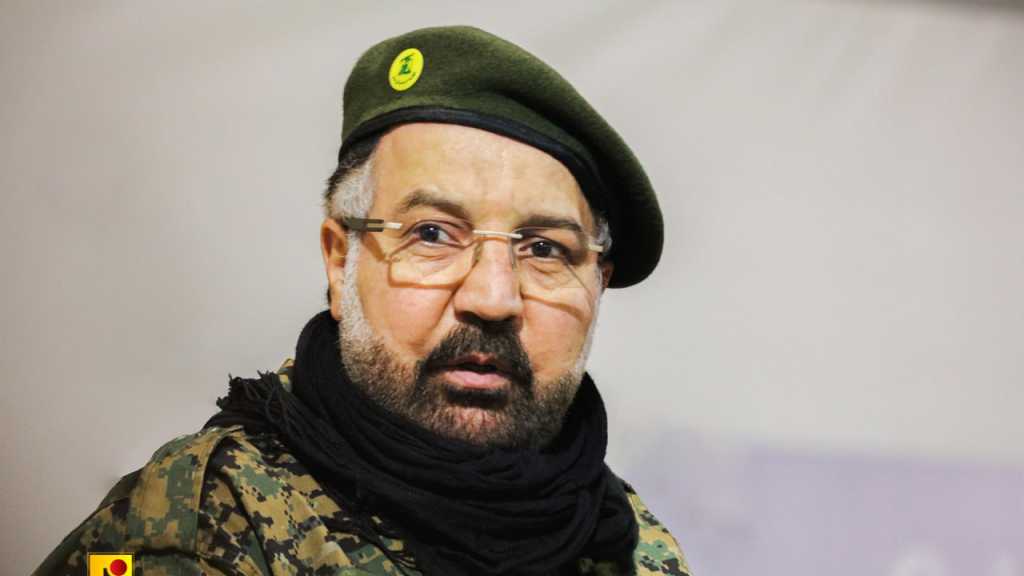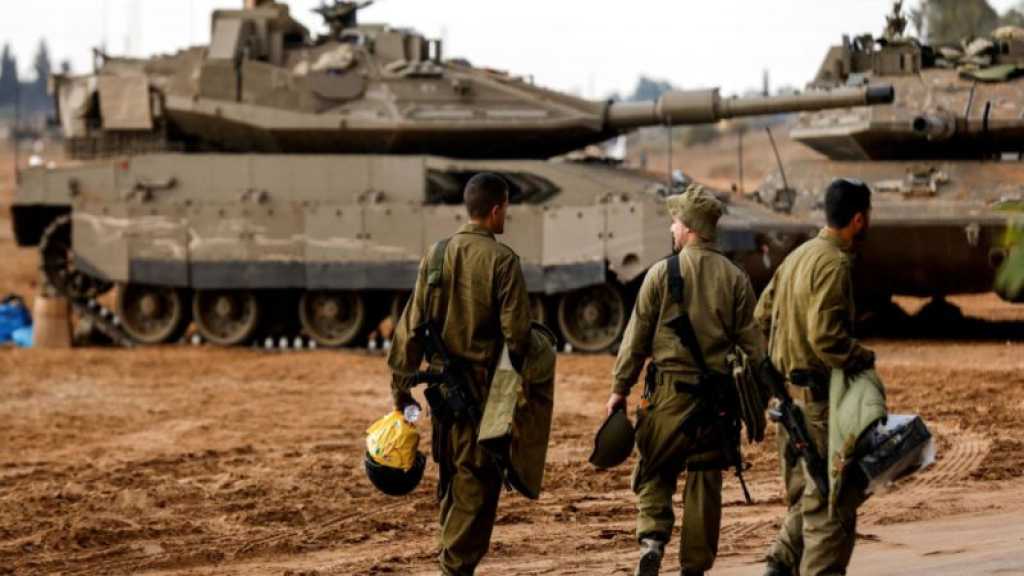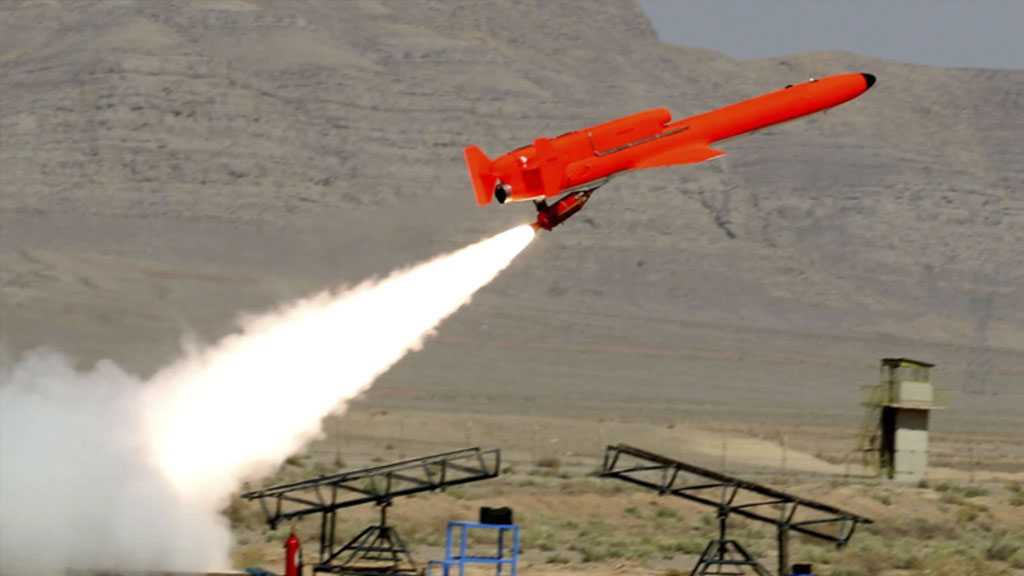Hezbollah: Forty Dimensions of Uniqueness [2/3] – Requirements for the Role of Resistance
![Hezbollah: Forty Dimensions of Uniqueness [2/3] – Requirements for the Role of Resistance](https://english.alahednews.com.lb/uploaded2/images/20220827091758.jpg)
By Housam Matar | Al-Akhbar Newspaper
Translated by Al-Ahed News
Hezbollah is a small organization fighting “Israel”, which is a regional entity and project with unlimited international support. Therefore, it needed material and financial assets, cadres, an incubating environment, a logistical structure, a dynamic and charismatic leadership, and a strategic geopolitical depth [national and supranational]. How did Hezbollah achieve this?
The first article in our three-part series focused on the impact of local and regional components on the emergence of the party and its forty years of experience.
17- Strict discipline and morality: A widely held notion is that military discipline is the father of all disciplines, and that the concept of bureaucratic organization was born within military formations to enhance the chances of victory before being adapted by other components of the state.
Hezbollah’s core is its jihadist military apparatus, and everything else within the party serves this core and gains value from it.
Combative competence requires strict discipline even within non-state/non-governmental movements, especially when their main enemy is highly efficient.
One of the ways to close the material gap with the “Israeli” enemy is to maximize the use of human resources through strict control, coordination, extracting the best from them, and using them with the highest feasibility, as well as maintaining confidentiality and adhering to the rules.
This requires a structure that combines hierarchy in the chain of command and flexibility in combat plans.
The religious dimension, especially concepts such as order [Allah Allah is in your orderly affairs], obedience to the leadership [which descends from the infallible to the Wali al-Faqih (guardian jurist) to the end of the organizational hierarchy according to authority and scope], the culture of keeping secrets, and the jihad spirit help in strengthening the mentality of discipline.
Thus, discipline within the party has a subjective, cultural, and religious dimension, in addition to the institutional one. This characteristic, i.e., a high degree of military discipline, quickly trickled down to the party’s institutions and formations.
This is why the organizational structures, both military and civilian, are far more significant than the sum of all individual efforts because the former is the outcome of the latter multiplied by several times the level of discipline.
18- Ideological framing is a necessary element for all revolutionary movements as it allows them to present their project to the public, create an identity for the organization, chart its course, and determine the objectives. It also compensates for the material impotence in the face of the hostile force.
The party’s ideology has a religious foundation. Its view is that the world is divided between the oppressed and the arrogant; the main source of the crisis in the region and its people is the structure of domination and occupation, and the path to independence is through Islamic resistance. Accordingly, “Israel” must be removed from existence, and America must be fought as an aggressor and an arrogant political regime as well as the Great Satan who has agents and tools within the region.
Hezbollah’s key attribute in this regard is its ideology. The group combines religious, political, and historical elements within its ideological framework in a manner that is easy for the public to understand and use and in a formulation that allows it to overlap with third world ideologies hostile to American hegemony, even from completely different premises, for example, leftist and nationalist.
19- The military rise imposed by the power of the “Israeli” enemy, as the party evolved militarily and organizationally to unprecedented levels.
The “Israeli” army is very powerful thanks to its accumulation of resources, planning, and massive Western support. It employs those resources effectively, as they constantly increase, linked to the growth of the “Israeli” economy and the continuous infusion of American military resources, both technically and financially.
Accordingly, the party found itself facing one possibility, other than defeat, which was to work to match the “Israeli” military and security forces in an asymmetric and creative way.
Thus, under heavy and sustained pressure to maintain a liberating and then deterrent capability, with Iranian-Syrian support, Hezbollah turned into one of the deadliest organizations on a global scale, according to American experts.
Perhaps the most prominent example in the present day is the party’s precision project [precision missiles and drones]. These have the aim of countering “Israel's” relative fire superiority in an asymmetric way that allows Hezbollah to hit the entity’s home front, which is of a limited geographical depth.
The party’s firepower, in quality and quantity, is not possessed by many armies around the world. This power can count on supplies in terms of technology, organization, training, planning, management, storage, secrecy, and knowledge, which is quickly reflected in the party’s other compartments.
20- Openness to modern sciences and their employment:
From the beginning, Hezbollah recognized the urgent need for scientific cadres, especially those that could be integrated into military development, and specifically those with basic engineering disciplines.
With the acceleration of “Israeli” technical progress, which is among the most advanced in the world as a result of the policies adopted by the “Israeli” government to attract technology companies since the 1980s, the party deepened its interest in modern sciences related to the manufacturing of explosive devices, building and using missile capabilities, and expanding in engineering disciplines for underground construction, communication, surveillance, broadcasting, and interception technologies. There is special focus on air and sea, and then programming techniques, artificial intelligence and data analysis.
Hezbollah achieved this through several avenues, including the transfer of Iranian experience and knowledge, sending student missions to both Syria and Iran, attracting outstanding university youths, and directing university students towards specific specializations.
It is easy for party members to engage in these disciplines since they are far from philosophical, social, and cultural issues that may conflict with religious beliefs and their interpretations.
This scientific culture was not confined to the military or hard sciences, but rather expanded to the disciplines of humanities, social, and economic sciences that influence the decision-making process through the establishment of research institutions specialized in public policy affairs (law, economics, and politics), development, statistics, family, education, culture, philosophy, and history. This gave the party a distinct advantage from many parties and political frameworks.
21- Interest in learning and accumulating experiences:
The “Israelis” themselves gave them this description, as they find that the party is always interested in drawing lessons and is good at learning from its experiences.
This quality is related to the need to mainly keep pace with the “Israeli” force and to compensate for the limited material and human resources.
The institutional environment of the party in its jihadi and organizational units also allows recording, storing, and retrieving data and information and extracting knowledge from it.
For example, in the documentary the Al-Manar Channel broadcast regarding the resistance operations in Syria and the Lebanese outskirts against terrorist organizations, specialized individuals were present within the various formations.
Their mission was to document live what is happening. They wore helmets equipped with cameras, and filming teams and officers specialized in studies kept pace with real operations for direct extraction of lessons to later update training and combat plans based on them.
Specialists in these tasks cite a saying attributed to Imam Ali (PBUH): “The mind is the preservation of experiences.”
Many institutions and party frameworks are interested in oral documentation of the history of their cadres, especially the founders’ generation. The Foundation for Preserving the Traces of Martyrs collects and archives as many of their works, achievements, and stories as possible and republishes them in the form of stories, biographies, and dramas.
22- Specialization and integration between military units, or the so-called interlacing of arms:
With the emergence of new needs and greater capabilities, the party is constantly promoting specialization in the military field, without this leading to separation and isolation between specialized units, but rather bringing them together according to objective and organizational criteria.
Specialization allows the party to build highly professional and experienced cadres with knowledgeable backgrounds, especially in advanced fields.
With technical progress in any field, additional specializations appear within it, which helps the party in its secrecy efforts by making information available in each field to a smaller number of individuals, making the possibility of an intelligence breach difficult and limiting its results if it occurs.
During the July 2006 war, alongside the conventional anti-armor units, a special Kornet missile unit appeared, which caused great damage to “Israeli” armor and contributed to thwarting “Israeli” ground maneuvers.
This specialized mentality was not limited to the military field of the party but extended to the entire organization. There are civil bodies that manage the affairs of communication with specific segments of the population [youth, students, women, children, unions, free professions, artists, media professionals, teachers, families of martyrs, etc.], and each field has its institutions [health, education, research and studies, social affairs, traditional and new media, etc.].
23- Progress through realistic achievements: The party was forced to make a radical change in the general mentality prevailing during the eighties, which did not see a horizon for resistance or military victory over the “Israeli” enemy after successive Arab disappointments, the last of which was not Egypt’s exit from the conflict.
This change was not possible through theorizing and mental persuasion in the beginning. Rather, it required successive success stories that inspire youth, mobilize society, and create faith through resistance.
One of the most prominent factors of the party’s uniqueness is its focus on bringing about a change in the reality of the conflict and providing an unambiguous answer to the challenge of the occupation.
Therefore, the first waves of resistance operations were characterized by a lot of valor and human sacrifice – from martyrdom operations [particularly the martyrdom operation of Ahmed Kassir in Tyre in 1982] to operations at the fronts to break into enemy positions and break its prestige, in which a relatively large number of martyrs fell.
Hezbollah's success story in resistance is the anchor of its soft power, and it has been a snowball rolling for 40 years. Therefore, the party does not sometimes find itself concerned with much theorizing in the field of resistance, as the experience speaks for itself. It only works on framing it and presenting it to the public in various forms on an ongoing basis.
24- Control in the battle of awareness and the narrative of victory: In the context of the war with the “Israeli” enemy, Hezbollah managed to achieve a remarkable superiority in the battle of awareness based on establishing its credibility and reliability due to the media performance and leadership charisma of Sayyed Hassan Nasrallah.
Victory in contemporary wars is no longer decisive because they are non-comprehensive wars, but rather extended, low-intensity wars where victory is achieved through accumulation.
Because victory is no longer decisive, it has become an imagined and relative issue that depends on expectations, the framing of the battle, and the psychological and media performance of the two sides.
The “Israeli” enemy has been making unremitting efforts in recent years in the battle of awareness, developing media platforms and networks, and controlling its military rhetoric and terminology to regain the initiative in this field.
This explains the anti-Hezbollah efforts to correct the credibility of its leadership as a basis for attracting popular support and influencing enemy societies.
This characteristic of the party reinforces the “Israelis'” reluctance to wage war, as without a decisive outcome it will be easier for the party to present its narrative of the war and its victory in it, whether for the local or regional audience or even segments of the settlers in the “Israeli” entity.
The bulk of modern wars do not take place on the frontlines, but in the societies of the warring parties. Therefore, the emerging awareness/cognitive wars are active on recent discoveries in neuroscience and psychology, as well as on the massive expansion of social media.
25- Mastering the calculated dangerous maneuver: There is no doubt that the party is a rational [value-based] player, even if it is good at convincing its opponents that it is not when necessary, especially since it goes with careful calculations towards sometimes unimaginable “adventures.” The need for adventure is related either to necessity or to a window of opportunity or both.
Hezbollah's strength and structure, the metaphysical dimension in its culture, and its reliance on a regional lever help it accept "adventures" when necessary.
The two most recent examples of this are its participation in the Syrian war and the current border-energy escalation with the “Israeli” entity. Participation in the Syrian war was perhaps Hezbollah's greatest adventure.
However, after the Syrian opposition became armed, militarized, and international, the party had no other choice but to either accept the challenge or accept the catastrophic outcome of the Syrian war.
The party was able to employ its limited capabilities in the most efficient way possible on the ground, which contributed to pushing an existential threat to Syria, Lebanon, and the resistance and reducing it to a strategic challenge that can be dealt with for years.
In the second case, Hezbollah is benefiting from a favorable international moment and from local necessities linked to the collapse to seize the opportunity to regain Lebanon's invading rights, based on gradual, calculated steps that balance between positioning behind the negotiating process of the Lebanese state and its readiness to go to war if necessary.
26- Deepening the strategic front: Confronting the Zionist entity is a conflict with the American system of hegemony in the region.
Any national resistance movement, especially when it belongs to small states, must possess a strategic depth that guarantees it supplies of resources, maneuverability, and political cover.
Thus, the party had to build a regional strategy based on this need. That is why it was primarily concerned with the relationship with Syria and Iran and for a long time chose to avoid confronting other Arab regimes, built ties with Islamist and nationalist groups and parties in the region, and inspired and supported groups that share the project of confronting hegemony.
Therefore, when the “Israelis” evaluate the cost of the war with Hezbollah, in addition to the unprecedented losses and damage they will incur, many regional factors will be present about the role of Iraq and Yemen, for example, and how this will affect the normalization project and the party's ability to use the Syrian front, and whether the lines of fighting inside Palestine will move.
The Americans’ integration of Arab regimes [such as Saudi Arabia, the Emirates, and Qatar] and Turkey more clearly in the regional confrontation after the failure of the project to invade Iraq has led to an increase in the party and Iran’s interest in building a strategic depth for the resistance project and protecting its main regional incubators.
27- Application of hybrid warfare: In its infancy, the party followed the traditional methods of guerrilla warfare due to its relatively limited resources, embryonic experience, and modest human number.
However, the growth and development of the party's military power prompted it over time to develop its own model in which it combines guerrilla tactics with the capabilities of regular armies.
This hybrid method emerged in the fighting in 2006, then in the Syrian war, and this attracted many “Israeli” and Western studies and evaluations.
The party integrates with remarkable efficiency between war on awareness, media messages, psychological warfare, and security activities, including cyber war, in its military effort.
It also combines traditional and highly advanced means, such as merging traditional fire media with live images from drones directing fire or the possible combination of conventional and precision missiles in the next war in intensive waves to flood the Iron Dome system and reduce its interception efficiency.
28- Economization in military force to avoid distraction and attrition: The party is aware of the limits of its strength and its capabilities. Therefore, its performance sometimes appears conservative, but this is related to its leadership’s estimates of force rationing, even if it is sometimes surplus.
This tendency is linked to the concern that the elements of power will be wasted at the expense of the primary conflict with the “Israeli” enemy.
This economization of force means using it as little as possible in cases outside the direct conflict with the “Israeli” enemy and using other tools or the threat of force.
Therefore, the events of May 7, 2008 were an exception to establish the rule to not use weapons at home, and the Syrian war was an exception linked to an existential threat to the resistance.
Many of the experiences of national forces that have engaged in internal conflicts that have exhausted them, especially with the party's obsession with sectarian civil war under great external influence hostile to the resistance, are present in the awareness of Hezbollah leaders.
This surplus in military power sometimes pushes the party to abstain from highlighting and using its political influence at home so that this is not considered an investment in its military power.
This management of power includes the conflict with the “Israeli” enemy itself, where the resistance accurately calculates each step and its results and what it will reveal in terms of capabilities and feasibility by noting the goal, stage, and cost.
Power is tempting, so the party is credited with understanding and controlling its limits, not the other way around.
29- The brilliance of the security and intelligence capabilities: These provide the party’s leadership with a huge amount of political, security, and social data and information at the internal level that are related to the “Israeli” enemy and the arenas that have an impact on the resistance project.
This intelligence need motivates the party to dedicate significant resources to invest in technology. This investment, data, and information for military and security need is automatically reflected in the rest of the civilian units through the transfer of experience, expertise, and information so that it is employed to extract knowledge to develop political, development, electoral, or media plans.
30- Youth momentum: The party pays special attention to attracting this segment, as it is in the first place the most capable of fighting and field work.
The party grew up on young cadres, as the older generation at that time had made its political choices in other formations. Therefore, it was natural that the founding generation of Hezbollah were young people who were looking for a different political project.
Hezbollah benefits from the nature of the jihad work, which attracts young people who are captivated by the desire for strength, achievement, and heroism and who are more willing to sacrifice.
Hezbollah allocates a great number of resources and institutions specifically to attracting and integrating young segments into the party. It works to a great extent on rehabilitating them culturally, militarily, and politically and giving them roles that allow them to work and advance in the military and civil fields.
Therefore, Hezbollah is a young, vibrant, and renewed organization, but this is not without challenges and dilemmas related to the generational difference and the emergence of new cultures and values within the party organization that may raise some tensions.
Comments




